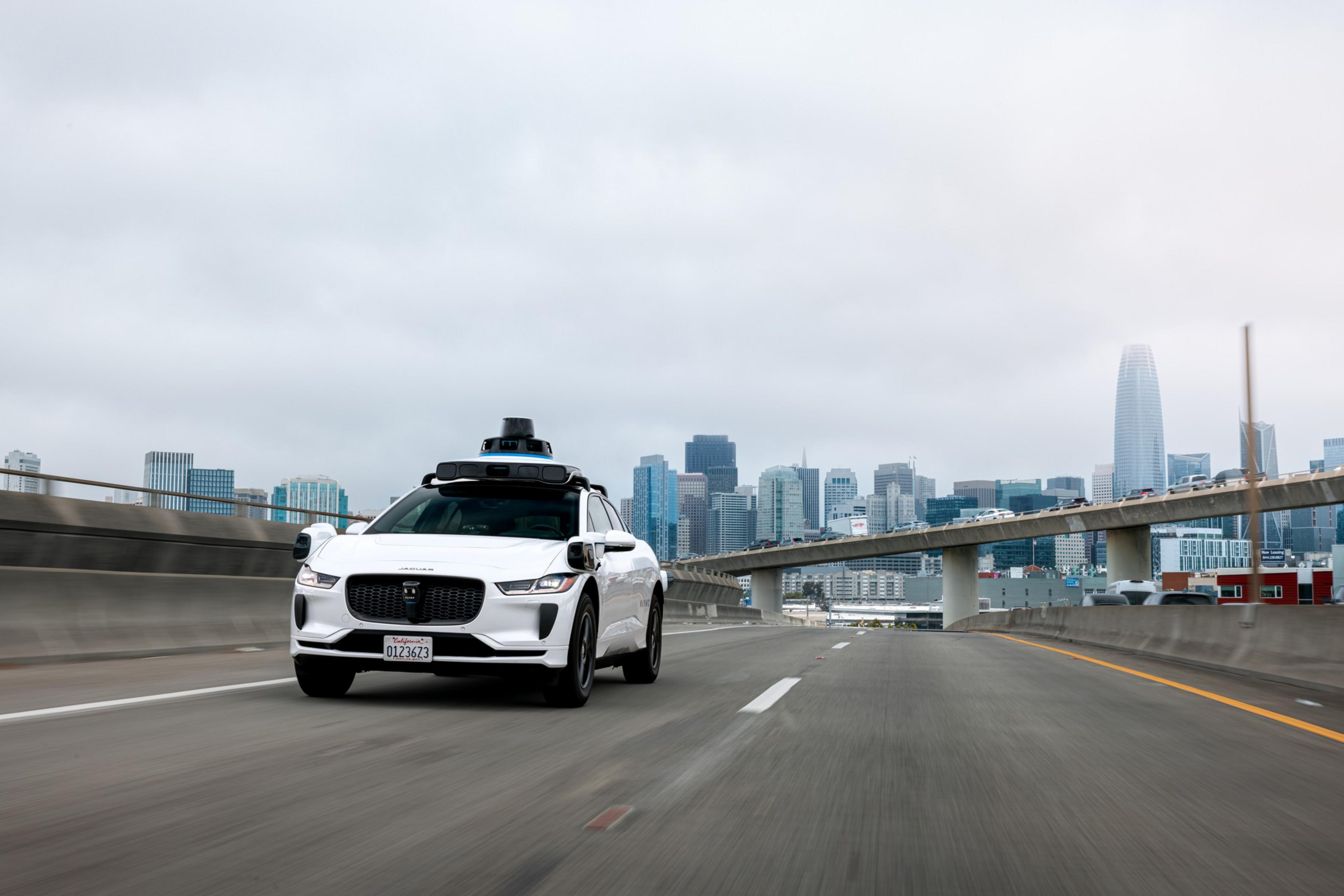Long confined to city streets, Waymo will begin operating on Bay Area freeways on Wednesday and is extending its service to San José. The robotaxi company is also launching 24/7 curbside service to and from San José Mineta International Airport.
Waymo’s Bay Area service area is now a unified zone of more than 260 square miles. The robotaxis will operate on the 101, 280, and other freeways. In a major expansion, the Alphabet-owned company will also begin offering freeway rides in Phoenix and Los Angeles.
Not all riders will be able to immediately take freeway rides. The service will first be offered to passengers who have opted in for early access to Waymo’s latest features and will gradually be expanded to all. As the service rolls out, riders can express interest in taking a freeway ride. When a freeway route is quicker, they may be matched with one.
“Freeway driving is one of those things that’s very easy to learn but very hard to master,” Waymo co-CEO Dmitri Dolgov said. “So it took time to do it properly, with a strong focus on system safety and reliability.”

San Francisco International Airport is not yet part of Waymo’s Bay Area service area. The company in September received a permit to operate at SFO and is rolling out service in phases. SJC is the second international airport in the U.S. — and the first in California — to offer a commercial robotaxi service; last year, Waymo launched 24/7 curbside service (opens in new tab) at Phoenix Sky Harbor.
Waymo’s operations at SJC come in advance of Santa Clara County hosting Super Bowl LX and the FIFA World Cup at Levi’s Stadium next year. San José Mayor Matt Mahan told The Standard in September that he hopes visitors to the sporting events will travel across the Bay Area in robotaxis instead of rented cars.
Waymo said its robotaxis have been providing freeway trips to employees and their guests for more than a year. The cars’ freeway capabilities are built on the same AI that powers urban driving but have been expanded and validated through closed-course and simulation testing. Waymo said that on private test tracks, it has staged complex and rare scenarios to train its software to merge onto freeways and deal with speeding motorcyclists or cars flipping over. The company said it has trained its software to respond to thousands of synthetic scenarios.
Waymo this year released peer-reviewed research (opens in new tab) showing that its fleet is dramatically better than human drivers at avoiding a wide range of collisions on public roads. Based on six years of data and 56 million miles traveled by Waymo vehicles, the study found that the self-driving cars experienced 82% fewer crashes with bikers and motorcyclists, and 92% fewer crashes with pedestrians, than human drivers.
“The Waymo driver does not get tired, does not lose focus, and does not make emotional decisions,” said Jacopo Sannazzaro, a Waymo product manager leading the freeway expansion effort.
Waymo’s expansion comes as the Bay Area robotaxi wars are heating up. Uber is set to launch a robotaxi next year, as is Amazon-owned Zoox. Tesla’s semi-autonomous robotaxi service, which still uses a safety driver in the front seat and has a waitlist, operates on Bay Area bridges and runs from Marin to San José.
